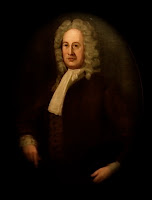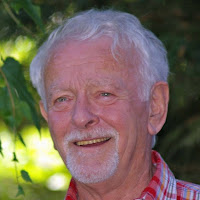 |
| Joseph Montfort |
 |
Magpie file photo
Daniel Coxe |
The Grand Lodge of England would name other provincial grand masters, including John Hammerton for South Carolina in 1736; Francis Goelet in New York in 1751; John Rowe at Boston in 1768; and, in 1771, Joseph Montfort “of and for America.”
Montfort (pronounced Mumford) was born in England in 1724 and became a highly significant figure in the early history of North Carolina by the time he died in 1776. He held a variety of public offices, appointed and elected; was a noteworthy land-owner; and led Colonial troops. On the negative side, there were unflattering and unsolved mysteries about his professional life.
He was a Mason at labor in Royal White Hart Lodge in Halifax, North Carolina. On January 14, 1771, the Grand Lodge of England named him provincial grand master “of and for America.” Montfort even had a deputy, Cornelius Harnett, and together they did exercise authority, albeit limiting themselves to the province of North Carolina. The “of and for America” part of Montfort’s title was noted on the warrants he issued to local lodges. (He chartered ten lodges and helped six others get reorganized, making huge strides toward establishing the current grand lodge, which happened more than a decade after his death.) His headstone reads, in part: “Highest Masonic official ever reigning on this continent... the Last and Only Grand Master of America.”
How the heck did that happen?
I attribute it to that lack of understanding among Britons about the territories in the New World. I don’t doubt the average man in the street understood Jamaica was different from Nova Scotia, but there was some common confusion about the Americas.
What was “North America?” Did that name apply to the thirteen future United States, or did it also include the captured New France? Did it encompass anyplace else? Were the “Plantations” down south the same legally as “Colonies” up north? Did “New England,” of which Henry Price was made provincial grand master in 1733, refer to the whole of the continent (as Grand Master John Lindsay, Earl of Crawford, purportedly told Price), or only to the northern region, as we employ the name today? In terms of Masonic hierarchy, with the advent of a provincial grand master “of and for America,” what would be the dispositions of other PGMs, such as Sir John Johnson in New York?
Fortunately, there is a document clarifying it all. On February 6, 1771, Montfort received from the Grand Lodge his commission (he had to pay for it!) certifying his rank as “P.G.M. for No. Ca.” This hangs in the offices of the Grand Lodge of North Carolina today.
Montfort is memorialized in North Carolina Freemasonry in the form of that grand lodge’s top honor being named for him. The Joseph Montfort Medal is awarded by the grand master “to any Master Mason in good standing and recognized by the grand lodge who, in the opinion of the grand master, is deserving thereof because of distinguished service or achievement.” A grand master may award no more than three medals, and they all make use of the three availabilities. Carl Claudy received the honor in 1947. In more recent years, brethren you’ve read about on The Magpie Mason have been so honored, like Bill Brunk, Dave Hargett, and Allen Surratt.
 |
| Courtesy Find a Grave |
 |
| Courtesy Find a Grave |





























































































